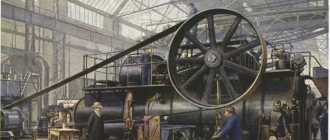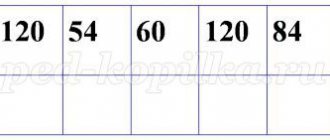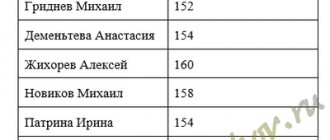Lesson summary: Control algorithms, grade 9
Lesson summary Control algorithms (9th grade, lesson 32, textbook by L.L. Bosov). In this lesson, students become familiar with management as an information process and reinforce the ability to develop algorithms for the performer.
Planned educational results - subject - ideas about the concept of management, the object of management, the control system, feedback; - meta-subject - the ability to correlate one’s actions with the planned results, monitor one’s activities, determine methods of action within the framework of the proposed conditions, adjust one’s actions in accordance with the changing situation; the ability to evaluate the correctness of completing a learning task; mastery of the basics of self-control, self-esteem, decision-making and making informed choices in educational and cognitive activities; — personal – algorithmic thinking necessary for professional activities in modern society.
The educational tasks to be solved: 1) consolidate the ability to develop algorithms for the performer; 2) introduce students to management as an information process; 3) consider examples of control algorithms.
Basic concepts studied in the lesson: - cybernetics; - management; — controlled object; — control object; — control algorithm; - Feedback.
ICT tools used in the lesson: - teacher’s personal computer (PC), multimedia projector, screen; — Students’ PCs.
Electronic educational resources - presentation “Control Algorithms”. — Idol programming system.
Features of presenting the content of the lesson topic
1. Organizational moment (1 minute) Greeting students, communicating the topic and goals of the lesson.
2. Repetition (5 minutes) 1) checking the studied material - questions (1-4, 6-9) to §3.5; 2) visual check of homework completion in RT No. 160-164; 3) consideration of tasks that caused difficulties when doing homework.
3. Study of new material (15 minutes) New material is presented accompanied by the presentation “Control Algorithms”.
1 slide - title of the presentation;
Slide 2 - keywords; — control — control algorithm — feedback
3 slide - control; Management is a process of purposeful influence on an object; carried out to organize the functioning of the facility according to a given program. In the middle of the last century, the outstanding American scientist Norbert Wiener (1894-1964), who studied various technical and biological systems, established that control in them is carried out according to a general scheme. Wiener is considered the founder of the science of management - cybernetics.
Slide 4 - examples; The controlled object (control object) can be a technical device (for example, a car), one person (for example, a student, a soldier) or a team (for example, an orchestra, enterprise employees). The controlling object (control system) can be a person (for example, a driver, an orchestra conductor, a teacher, a director), a team (for example, a government, parliament), or a technical device (for example, an automatic regulator, a computer). A sequence of commands to control an object, leading to a predetermined goal, is called a control algorithm. The simplest control algorithms can consist of a single command or be a linear sequence of commands. More complex control algorithms contain branches and loops.
Slide 5 - information and management (diagram); Example. Controlling the movement of vehicles (control object) at an intersection using a traffic light (control object). The control action depends on the initial information contained in the control object.
Slide 6 - feedback; Feedback is the process of transmitting information about the state of a control object to the control system. Feedback allows you to adjust the control actions of the control system on the control object depending on the state of the control object. Feedback is provided in a number of household appliances (for example, an iron with a thermostat, a refrigerator, a pressure cooker), in living organisms, and in society. Nowadays, the role of the control system is very often assigned to a computer, in whose memory there is a control program that provides all the information options that can be obtained through feedback. Example. If, instead of a regular traffic light, an “intelligent” traffic light is installed at a road intersection - a high-tech device equipped with sensors that record the speed of movement on the road and the density of traffic flows, then traffic control will become more rational by taking into account information coming from the control object.
Slide 7 is the most important thing. — Management is the process of purposeful influence on an object; carried out to organize the functioning of the facility according to a given program. — A sequence of commands to control an object, leading to a predetermined goal, is called a control algorithm.
Questions and tasks 8 slide – questions and tasks; Questions 1-6 to paragraph 3.6
4. Problem solving. Practical part (20 minutes) Organize the work of students to complete tasks No. 165, 167-170 in the workbook. These tasks are similar to those submitted for the state final certification of 9th grade students. Tasks No. 166, 171 can be solved in the KuMir environment. To work, you need to install the KuMir Programming System on your students’ PCs.
Tasks that were not completed in class are assigned at home.
5. Summing up the lesson. Homework message. Grading (4 minutes) Slide 9 - supporting summary; Slide 10 - D/z.
Homework. §3.5, question No. 1-10 to the paragraph; RT: No. 160-164.
All material for the lesson is in the archive.
Download (6 MB, rar): Lesson notes Control algorithms, grade 9
The archive includes: - abstract, - answers and solutions to tasks in the workbook, - presentation “Control Algorithms”.





